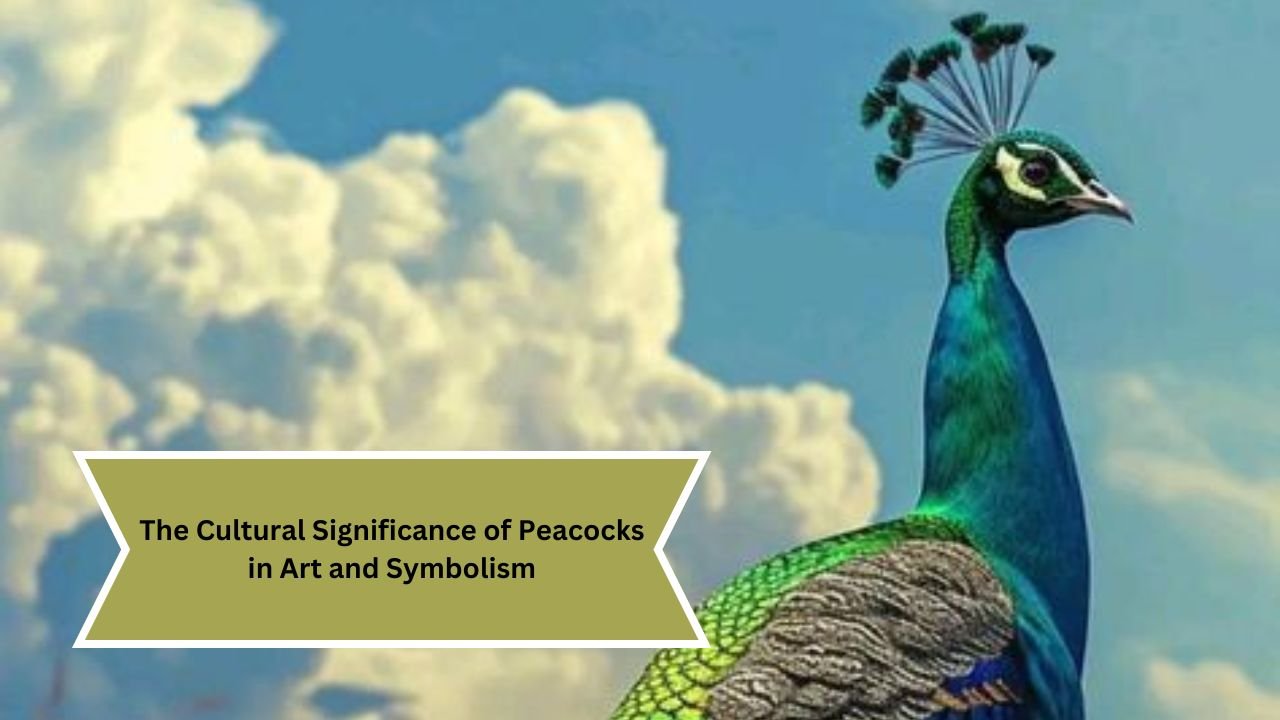Peacocks have captivated human imagination for centuries with their dazzling plumage and graceful presence. These magnificent birds are not just admired for their beauty; they hold profound cultural significance across various societies and artistic expressions worldwide. From ancient civilizations to contemporary art, the peacock symbolizes a range of concepts, including beauty, pride, resurrection, and immortality. This article explores the rich cultural significance of peacocks in art and symbolism, examining their role in different cultures and artistic mediums.
Historical Context: The Peacock in Ancient Civilizations
Ancient Egypt
In ancient Egypt, the peacock was associated with the divine and the eternal. The bird’s feathers were often used in decorative items, and depictions of peacocks were found in tomb paintings, symbolizing immortality and the afterlife. The peacock’s association with the goddess Hathor, who represented joy, beauty, and fertility, further solidified its status as a significant cultural emblem.
Ancient India
In India, the peacock holds a special place in both art and spirituality. The national bird of India, the peacock, is revered in Hindu mythology as a vehicle of the goddess Saraswati, who embodies wisdom and knowledge. Its vibrant colors and striking appearance symbolize beauty and grace. In Indian art, the peacock is often depicted in paintings, textiles, and sculptures, representing both artistic skill and cultural identity.
Greco-Roman Culture
The Greeks and Romans also regarded the peacock as a symbol of immortality and the soul. In Greek mythology, the peacock was associated with Hera, the queen of the gods, who transformed her servant into a peacock, giving it the many “eyes” on its tail. This transformation symbolized vigilance and the watchfulness of the divine. The Romans incorporated peacock motifs into their mosaics and frescoes, emphasizing their connection to luxury and opulence.
Peacocks in Religious Symbolism
Christianity
In Christian symbolism, the peacock represents resurrection and eternal life. Early Christians adopted the peacock as a symbol of Christ’s resurrection, drawing parallels between the bird’s ability to shed and regrow its feathers annually and the idea of rebirth. Artwork from the early Christian period often features peacocks, showcasing their association with paradise and the promise of eternal life.
Buddhism
In Buddhism, the peacock symbolizes wisdom and the ability to see beyond illusions. The bird’s striking colors are seen as a manifestation of the beauty of enlightenment. In Buddhist art, peacocks are often depicted alongside the bodhisattvas, embodying spiritual growth and transformation. The bird’s ability to consume poisonous plants without harm also symbolizes the potential for overcoming negativity and adversity.
The Peacock in Literature and Folklore
Peacocks have also found their way into literature and folklore, where they often embody themes of vanity, pride, and beauty. Fables and tales frequently highlight the dual nature of the peacock: its stunning appearance juxtaposed with its tendency toward arrogance.
Aesop’s Fables
In Aesop’s fables, the peacock is often portrayed as vain and self-absorbed. One such fable tells the story of the peacock boasting about its beauty while belittling the more humble birds. The moral of the story serves as a reminder that inner qualities, such as kindness and humility, are far more valuable than outward appearance. This theme resonates across various cultures, emphasizing the need for balance between pride and humility.
Folk Tales
Many cultures have folk tales that feature peacocks as central characters, often representing beauty, pride, or transformation. In some stories, the peacock serves as a guide or protector, while in others, it symbolizes the consequences of vanity. These narratives not only entertain but also impart moral lessons about the importance of character over superficial qualities.
Peacocks in Contemporary Art
In modern art, peacocks continue to inspire artists, symbolizing beauty, individuality, and the celebration of nature. Their striking appearance makes them a popular subject in various artistic mediums, including painting, sculpture, and photography.
Paintings
Contemporary painters often utilize the peacock’s vibrant colors and intricate patterns to explore themes of identity and self-expression. Artists like Gustav Klimt, known for his decorative style, incorporated peacock motifs into his work, using the bird as a symbol of beauty and sensuality. In contrast, other artists may employ the peacock to convey deeper philosophical messages about the human experience.
Fashion and Design
In fashion and interior design, peacock feathers are used to create stunning visuals. Designers often draw inspiration from the bird’s colors and patterns to craft luxurious textiles and accessories. The peacock’s association with opulence and beauty translates seamlessly into the world of fashion, where its feathers are emblematic of glamour and sophistication.
Peacocks in Popular Culture
Peacocks have also made a significant impact on popular culture, appearing in literature, film, and music. Their allure continues to resonate with audiences worldwide, symbolizing themes of beauty, freedom, and individuality.
Literature and Poetry
Peacocks have been featured in various literary works, serving as symbols of beauty and desire. Poets often invoke the peacock as a metaphor for unattainable beauty or as a representation of the complexity of love. The bird’s vibrant plumage serves as a poignant reminder of the fleeting nature of beauty and the depth of human emotions.
Film and Television
In film and television, peacocks frequently appear as symbols of elegance and sophistication. From glamorous settings in romantic films to vibrant animations in children’s shows, the peacock captivates audiences with its striking visuals. These representations further reinforce the bird’s cultural significance as a symbol of beauty and grace.
Conclusion
The cultural significance of peacocks in art and symbolism is vast and multifaceted. From ancient civilizations to contemporary art, peacocks embody themes of beauty, pride, resurrection, and wisdom. Their captivating presence in mythology, religion, literature, and popular culture reflects humanity’s enduring fascination with these remarkable birds. As symbols of elegance and individuality, peacocks continue to inspire and resonate with people across the globe, reminding us of the intricate connections between nature, art, and human experience. Through the lens of peacocks, we gain deeper insights into the cultural narratives that shape our understanding of beauty and identity, enriching our appreciation for the natural world.
| HOME | CLICK HERE |
| PEACOCK | CLICK HERE |

